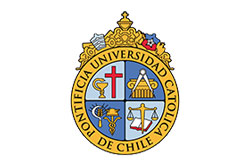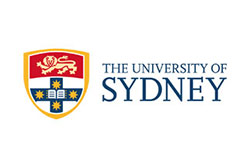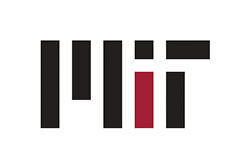EMBARQ Brazil celebrates the launch of Belo Horizonte’s first bus rapid transit system
Source: EMBARQ

Having launched on March 8, 2014, Belo Horizonte’s first bus rapid transit (BRT) system – MOVE – has already had significant benefits for the city’s residents. Aiming to test its efficiency, a local press team traveled the same route by BRT and car and testified: MOVE is five times faster than the car. Belo Horizonte‘s Mayor Marcio Lacerda went so far as to state, “We are beginning a major transformation for urban mobility in Belo Horizonte with EMBARQ Brazil’s support. MOVE represents more quality, comfort and agility for public transportation.”
EMBARQ Brazil’s close work with the city began in 2010, when President and Director Luis Antonio Lindau promoted the BRT concept during the development of Belo Horizonte’s urban mobility plan. Last year, Lindau was awarded the President Juscelino Kubitscheck Medal of Honor from the state of Minas Gerais as recognition for EMBARQ Brazil’s contributions to Belo Horizonte.
MOVE’s inaugural ride transported Mayor Lacerda, public officials, members from the Brazilian Ministry of Cities and Ministry of Planning, EMBARQ Brazil experts, citizens, and the press on a 17-minute trip – five times faster than the usual rush hour commute. When operations begin in May 2014 on the MOVE Antônio Carlos corridor, the system is expected to transport 700,000 passengers each day. On top of that, cyclists are welcome to the system: MOVE reserves a special spot for cyclists every weekend and at night on weekdays.
Testimonials to MOVE’s impact on the ground
«It’s a pleasure to behold the positive result in such a hard-working and committed city, which worked for four years aiming to develop a model transportation system,” said Daniela Facchini, EMBARQ Brazil’s Director of Projects and Operations. “MOVE’s first phase is an adjustment period that will allow us to identify aspects that need to be improved. I’m confident the system will improve each day and we will continue supporting the city.”
Not only do Belo Horizonte’s residents benefit from the high quality of service of the MOVE system, but so too does its team of operators. MOVE driver Fernando Oliveira Silva, 32, says, “The bus is comfortable, safe and keeps us out of traffic congestion. The bus corridor allows us to arrive faster and we are motivated to drive safely. When something new like this aims to improve ours and the population’s lives, it is always welcome.» The Transportation and Traffic Agency of Belo Horizonte (BHTrans) also recognizes the importance of this achievement. «The completion of MOVE in Belo Horizonte was a four-year effort between the city, BHTrans, the City’s Superintendent for Development (Sudecap) and the Computing and Information Agency of Belo Horizonte (Prodabel). However, this effort would have been much more difficult if we could not count on EMBARQ Brazil’s support, a current and active partner throughout. EMBARQ Brazil has worked intensively on the conception, design and development of the MOVE BRT project,” said Ramon Victor Cesar, BHTrans President.
National Secretary for the Grown Acceleration Program (Programa de Aceleração ao Crescimento [PAC]), Maurício Muniz of the Ministry of Planning, Budget and Management, congratulated the city on the successful project. “Having partners that are able to deploy important projects like MOVE is strategic for the federal government. From a total amount of US$ 60 billion to invest in urban mobility, we have already allocated US$ 48 billion for either BRT corridors, trains, or subway projects in Brazilian cities. Belo Horizonte deserves our compliments,” he stated.
More about MOVE
The MOVE system will eventually be composed of three BRT corridors – Antônio Carlos, Cristiano Machado, and Hipercentro – which will connect the city’s center to its major districts. This past week saw the beginning of operations on the Cristiano Machado line, while the full system is expected to launch in May 2014. The system will have a total of 23 kilometers (14.3 miles) of dedicated bus lanes that will serve approximately 700,000 people each day in Belo Horizonte.
EMBARQ Brazil and Belo Horizonte: Partnering for a successful MOVE system

The path to launching the MOVE system evolved over multiple years, following the city of Belo Horizonte and EMBARQ Brazil signing a Memorandum of Understanding (MoU) in 2010. Since then, the city has counted on the support of EMBARQ Brazil in the following areas:
Strategic Alignment: EMBARQ Brazil organized four meetings with the team responsible for the BRT system implementation in Belo Horizonte in an effort to gather technical operators and project managers to review risks and opportunities and to reorder strategies for the project execution.
Marketing Workshop: EMBARQ Brazil and BHTrans held an event to bring successful BRT marketing campaigns, lectured by specialists from Brazil, Mexico, Colombia and the United States. The workshop was streamed live via EMBARQ Brazil’s Twitter, allowing citizens to participate online.
Day 1 of operations: Learning from international experiences of cities that operate BRT systems is critical. EMBARQ Brazil brought together experts in iconic BRT systems like TransMilenio in Bogotá, Colombia and TranSantiago in Santiago, Chile to share successes and challenges faced during the first days of operation. The workshop resulted in the preparation of operating manuals and contingency plans for the MOVE system. This project is sponsored by FedEx.
Road Safety Audits: EMBARQ Brazil provided technical assistance through road safety audits. 60% of EMBARQ Brazil’s recommendations were followed. The measure is a fundamental step to reduce risk of collisions and save lives. These projects are made possible by Bloomberg Philanthropies.
Safety First: Safety First is a comprehensive traffic safety management program for public transportation. In its first stage, the program aims to train drivers on safe driving and raise awareness about the importance of road safety in order to reduce the number of crashes involving buses. The program provides practical strategies to encourage safe driving beginning with the bus drivers themselves. This project is sponsored by FedEx.
Personal Exposure Study: In November 2011, EMBARQ Brazil conducted a study on personal exposure to fine particulate matter (PM2.5) and nitrogen dioxide on Paraná and Santos Dumont Avenues, the central area of Belo Horizonte that contains BRT corridors. The data collected will be compared to future assessment to determine improvements in air quality as a result of the BRT implementation.
BRT Simulator: In 2011, EMBARQ Brazil used SimBRT, a simulation software for BRT systems, to test and improve the functioning of the Antônio Carlos corridor. The corridor will be 16 kilometers and meet a maximum demand of 20,000 passengers per hour in both directions.












